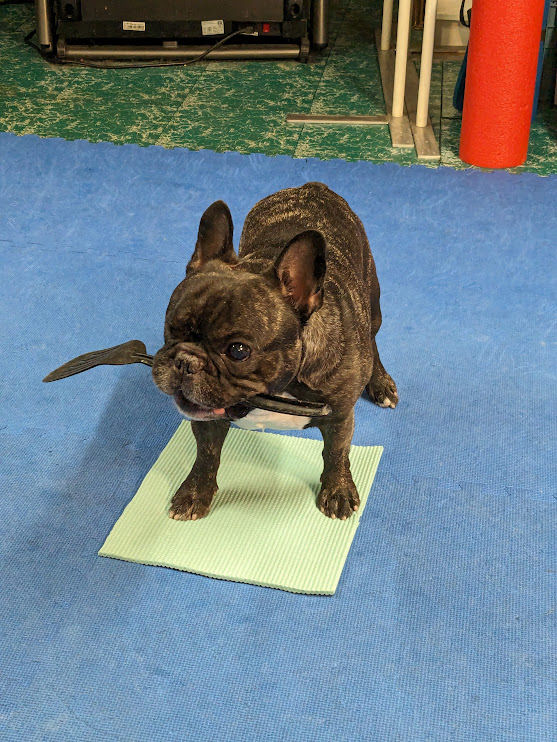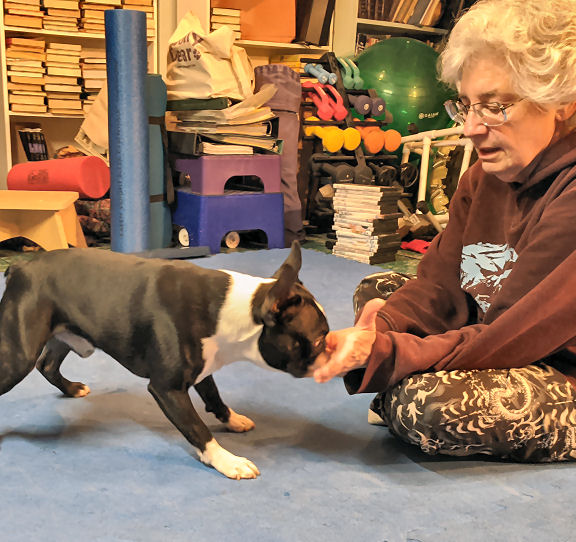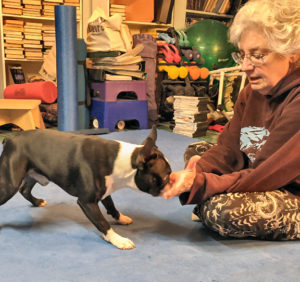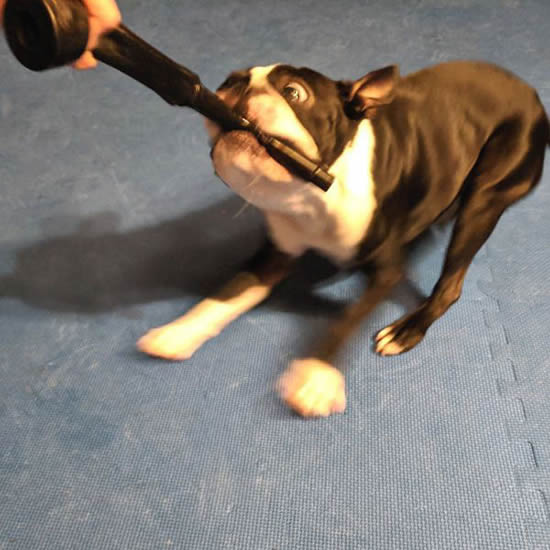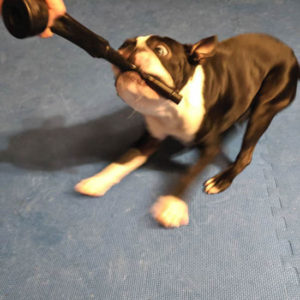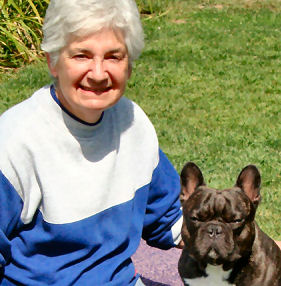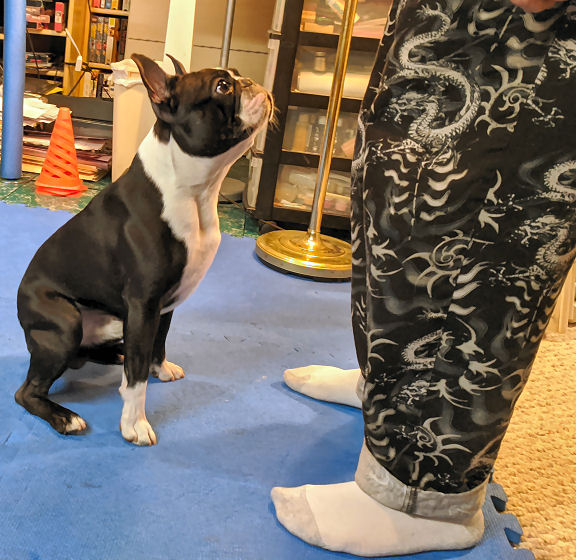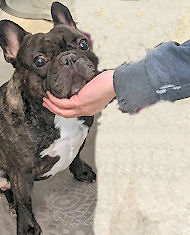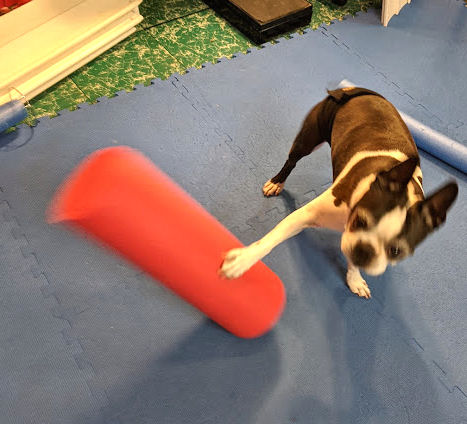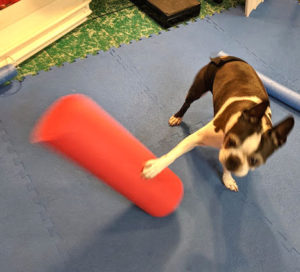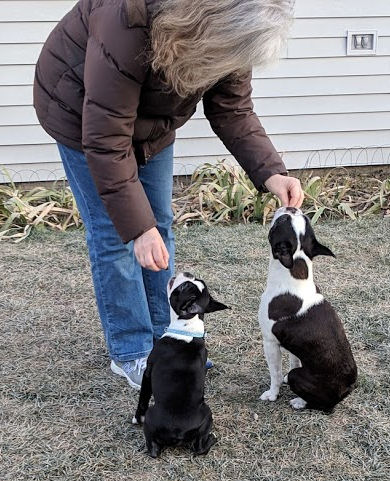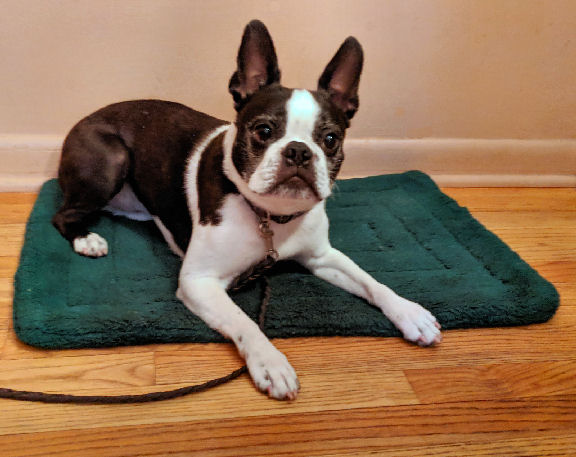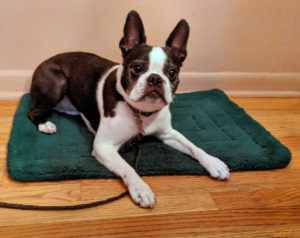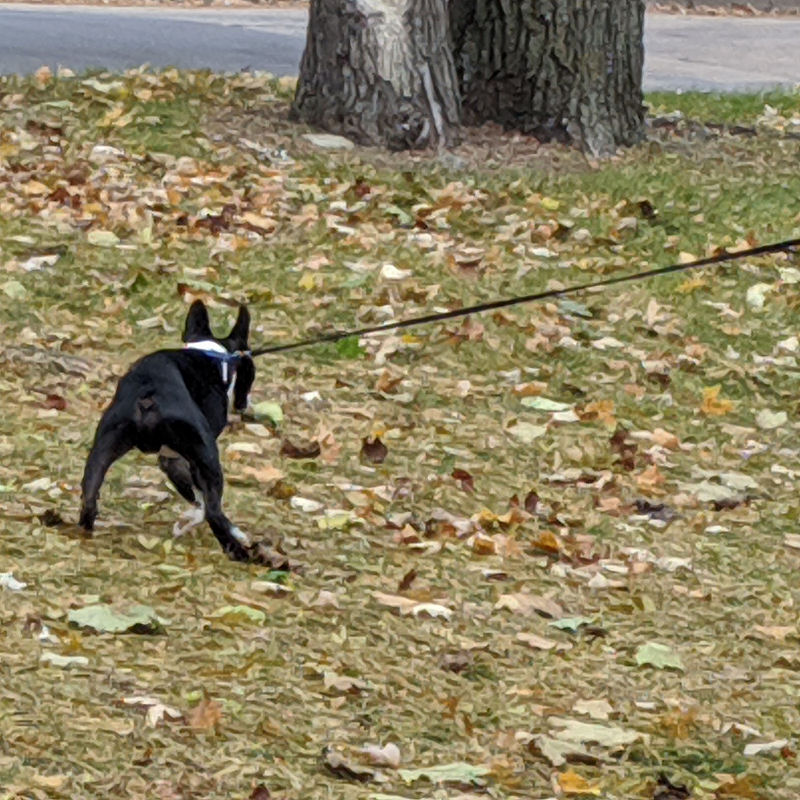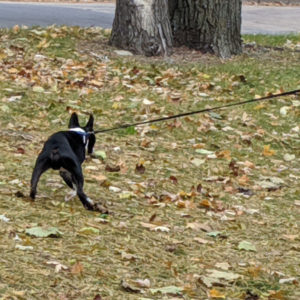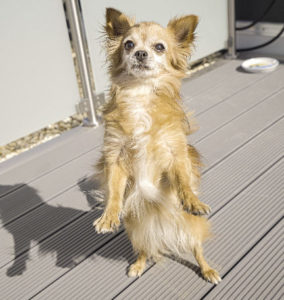The beauty part of slicing your dog training into small pieces is that you can put them together however you want. If you teach your dog what “hold” means, they’ll know how to hold anything, given an opportunity. You can mix and match your dog training into whatever new tricks or games you like.
One of the AKC Trick Dog behaviors is to open a cabinet or drawer. While simple for some dogs – just tie a cloth to the handle and the dog will pull on it, it’s proven difficult for Hope’s French Bulldog Torque.
But he does know some of the pieces. While he’s not great at tugging, he does know “hold” and “back up.” Put those two things together and, in theory, he should get the “Open It” trick pretty quickly.
Expectation vs. Reality
In fact, it’s taking a while to put it together. The string Hope’s using around the drawer handle isn’t at all familiar to Torque and he’s not sure what to make of it. Puzzling this out, Hope put it in with a bunch of things Torque knows to pick things up, hold, and “put away.”
Figuring out how to communicate with your dog is more than half the battle. Using a familiar “Put Your Stuff Away” game to get him used to picking up and carrying the string was one step. Another section will be getting him to “Hold” and “Back Up!” at the same time. The only time he’s put the two together before was for the dumbbell retrieve.
Listen, don’t assume
The formal dumbbell retrieve works like this:
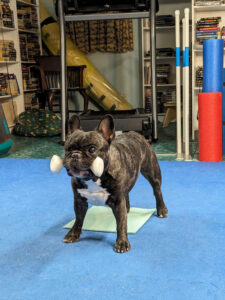
dog sits at heel
dog stays
handler tosses dumbbell
handler releases dog
dog gets dumbbell
dog comes to handler holding dumbbell
dog sits in front of handler holding dumbbell
dog releases dumbbell into handler’s hand on command
dog returns to heel on command
That’s always the way the dumbbell retrieve happens in competition. Everyone knows that, including the dog. When dogs always know what comes next, they sometimes skip to the end, dropping the dumbbell prematurely, or returning to heel position before they’re told.
To prevent the dog from “assuming,” we mix it up in practice. Sometimes the dog has to hold the dumbbell while returning to heel. Sometimes the dog has to heel while holding the dumbbell. Sometimes we heel with a “back up” thrown in.
That’s where Torque has learned to hold something while backing up. Now we take advantage of what he knows and expand it to hold anything and back up at the same time.
Pieces fit together
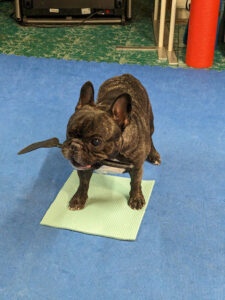
If you’ve already taught your dog pieces of any trick you want to teach, you can mix and match however you want. It’s the same “Hold!” chunk for whatever object. Dogs catch on pretty quickly when you put new ideas in a familiar context.
Mix and match your dog training
To create new tricks and behaviors, think about the little pieces your dog already knows. You can grow all the bits by using familiar objects in new places, or with new goals. Or new objects with familiar places and goals. Either one lets you put together a whole new game, just by using a mix and match recipe.

